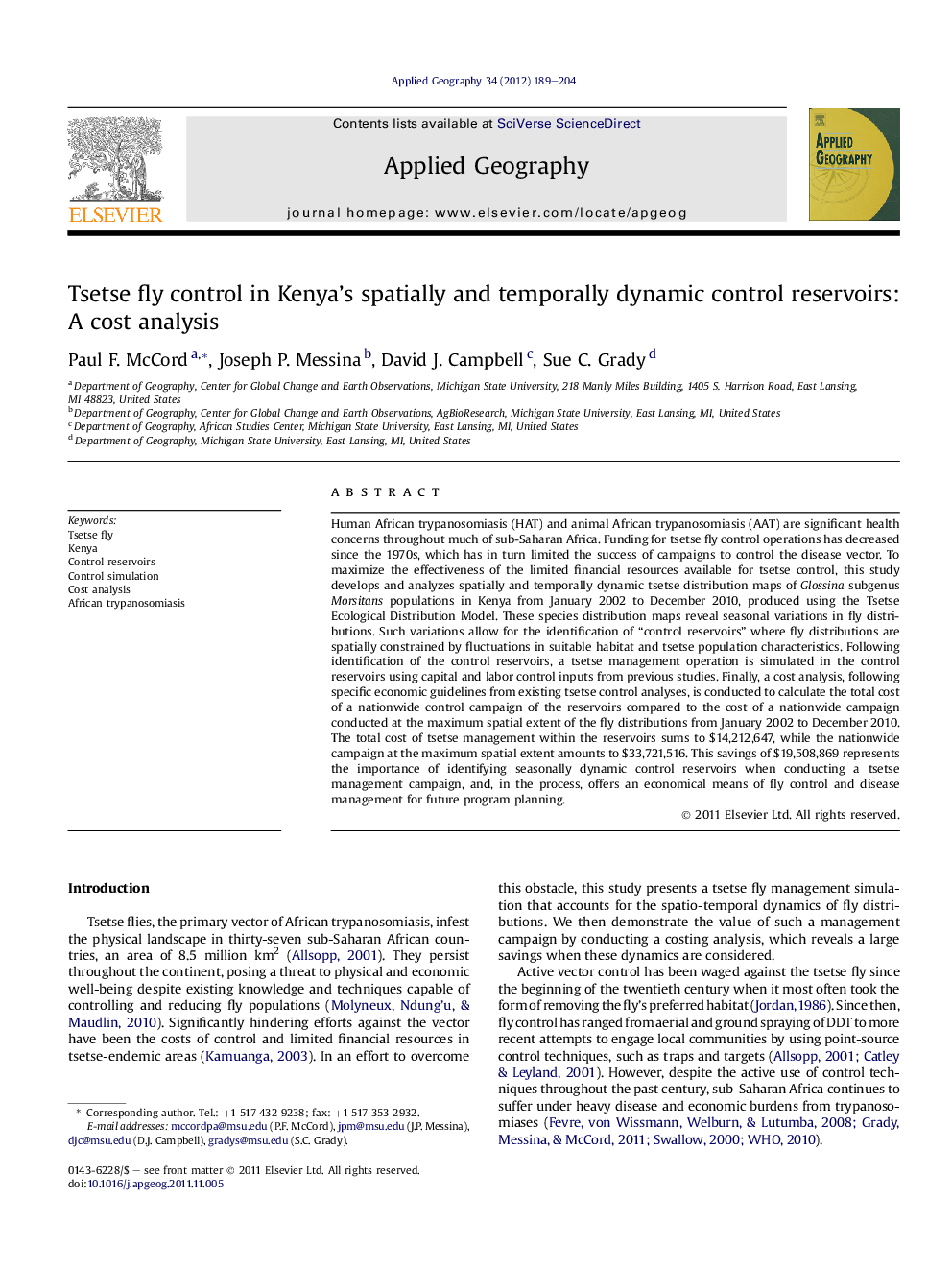| Article ID | Journal | Published Year | Pages | File Type |
|---|---|---|---|---|
| 83423 | Applied Geography | 2012 | 16 Pages |
Human African trypanosomiasis (HAT) and animal African trypanosomiasis (AAT) are significant health concerns throughout much of sub-Saharan Africa. Funding for tsetse fly control operations has decreased since the 1970s, which has in turn limited the success of campaigns to control the disease vector. To maximize the effectiveness of the limited financial resources available for tsetse control, this study develops and analyzes spatially and temporally dynamic tsetse distribution maps of Glossina subgenus Morsitans populations in Kenya from January 2002 to December 2010, produced using the Tsetse Ecological Distribution Model. These species distribution maps reveal seasonal variations in fly distributions. Such variations allow for the identification of “control reservoirs” where fly distributions are spatially constrained by fluctuations in suitable habitat and tsetse population characteristics. Following identification of the control reservoirs, a tsetse management operation is simulated in the control reservoirs using capital and labor control inputs from previous studies. Finally, a cost analysis, following specific economic guidelines from existing tsetse control analyses, is conducted to calculate the total cost of a nationwide control campaign of the reservoirs compared to the cost of a nationwide campaign conducted at the maximum spatial extent of the fly distributions from January 2002 to December 2010. The total cost of tsetse management within the reservoirs sums to $14,212,647, while the nationwide campaign at the maximum spatial extent amounts to $33,721,516. This savings of $19,508,869 represents the importance of identifying seasonally dynamic control reservoirs when conducting a tsetse management campaign, and, in the process, offers an economical means of fly control and disease management for future program planning.
► We present a cost-effective method for controlling the tsetse fly. ► Variations in suitable habitat are used to identify constrained fly distributions. ► A cost analysis presents the efficiencies of locating constrained distributions. ► Control of constrained distributions sums to $14 M compared to $34 M at max extent. ► Results suggest a more efficient approach to fly control for campaign managers.
